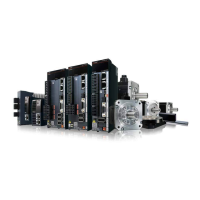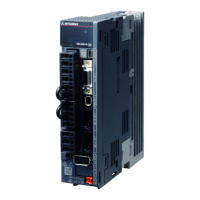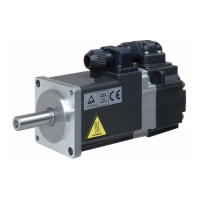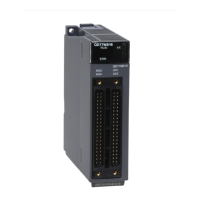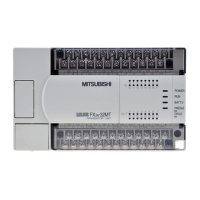11 - 23
11. OPTIONS AND PERIPHERAL EQUIPMENT
(4) Connection of the regenerative option
POINT
When using a regenerative option, remove the built-in regenerative resistor
and its wirings from the servo amplifier.
For the sizes of wires used for wiring, refer to section 11.5.
Avoid installing and removing the built-in regenerative resistor frequently, as
much as possible.
When reinstalling the removed built-in regenerative resistor, check if there is
no damage on the lead of the built-in regenerative resistor.
The regenerative option causes a temperature rise of 100
relative to the ambient temperature. Fully
examine heat dissipation, installation position and used wires, etc. before installing the option. For wiring,
use flame-resistant wire and keep them clear of the regenerative option body. Always use twisted cables of
max. 5m length for connection with the servo amplifier.
When using a regenerative option for MR-JN-20A(1)
MR-JN-40A, disconnect the wiring to P and C,
remove the built-in regenerative resistor from the servo amplifier, and then connect the regenerative option
to P and C. G3 and G4 are thermal sensor output terminals. G3-G4 is disconnected when the regenerative
option overheats abnormally.
P
C
G4
G3
C
P
Regenerative option
5m or less
Servo amplifier
(Note 2)
Always remove wiring (across P-C) of servo
amplifier built-in regenerative resistor.
(Note 1)
Note 1. A built-in regenerative resistor is not provided for the MR-JN-10A(1).
2. Make up a sequence which will switch off the magnetic contactor (MC) when abnormal heating occurs.
G3-G4 contact specifications
Maximum voltage: 120V AC/DC
Maximum current: 0.5A/4.8VDC
Maximum capacity: 2.4VA
Remove the built-in regenerative resistor in the procedures of 1) to 3), referring to the following diagram.
1) Disconnect the wires of the built-in regenerative resistor from the main circuit power supply connector
(CNP1). (Refer to (3) in section 3.3.3)
2) Remove the wires of the built-in regenerative resistor from the servo amplifier, starting from the
closest to the main circuit power supply connector (CNP1). At this time, be careful so as not to break
the wires.

